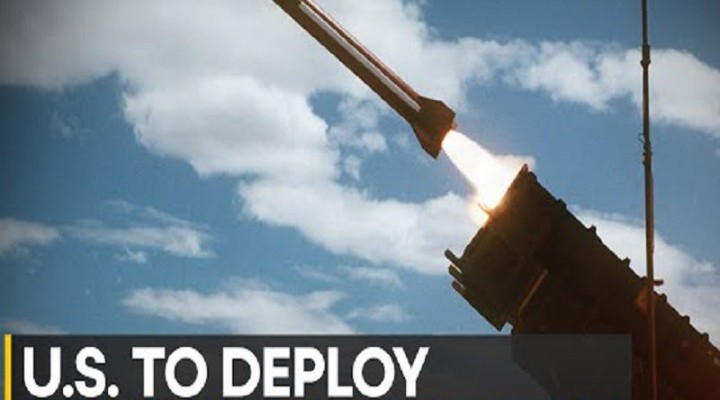Five Takeaways From The US’ Decision To Deploy Intermediate-Range Missiles In Germany

This move will fundamentally transform the European security architecture and bury President Putin’s plans to reform it.
Biden and Scholz agreed last week that the US will begin the rotational deployment of intermediate-range missiles in Germany starting in 2026, which Defense Minister Pistorius said will give his country time to develop similar weapons of its own. Russia warned that this risks sparking an uncontrollable escalation. At the same time, Germany, Poland, France, and Italy signed a letter of intent to jointly develop long-range cruise missiles. Here are five takeaways from these related developments:
———-
1. Trump’s Withdrawal From The INF Treaty Is To Blame
The former American leader withdrew his country from the late 1980s Intermediate-Range Nuclear Forces Treaty in 2019 on the false pretext that Russia was secretly violating the pact, but many interpreted this move as aimed at opening up more possibilities for the US to contain China. Biden would have probably pulled the US out after Russia began its special operation if Trump hadn’t done so earlier, but even so, the point is that Trump’s reckless decision is directly to blame for this latest escalation.
2. Germany Remains The US’ Top Military Partner In Europe
Poland has done a lot over the past decade to present itself as NATO’s vanguard state against Russia, but it was ultimately Germany that was chosen to host this rotational missile deployment, thus confirming that the US is relying on it to lead Russia’s containment after the Ukrainian Conflict ends. It’s beyond the scope of this analysis to elaborate on, but readers can learn more about the “Fortress Europe” concept here, which describes the way in which the US and Germany are jointly pursuing the aforesaid plan.
3. The Cruise Missile Pact Will Lead To Closer EU Military Coordination
The close military-technical cooperation that’ll be required between Germany, Poland, France, and Italy to jointly develop long-range cruise missiles is expected to comprehensively increase their overall coordination and create the basis for either a German-led EU army or a German-led NATO sub-bloc. Either outcome would represent yet another manifestation of Trump’s reported plan for NATO, which is already being partially implemented as was argued here in early July.
4. Russia Will Likely Deploy Similar Weapons In Kaliningrad, Belarus, & Crimea
Russian Deputy Foreign Minister Sergey Ryabkov promised that his country will respond to this development, which could predictably take the form of it deploying similar weapons in Kaliningrad, Belarus, and Crimea, from where they could then easily target major NATO infrastructure in the EU. If that happens, then it would likely in turn be spun by the West as a so-called “unprovoked escalation” in order to justify more preplanned escalations, thus setting into motion a dangerous cycle.
5. The Old Cold War Mentality Of Mutually Assured Destruction Will Return
The tit-for-tat short- and intermediate-range deployment of nuclear-capable missiles in Europe by the US and Russia will lead to the return of the Old Cold War mentality of mutually assured destruction considering the swiftness with which the world could end in the worst-case scenario. Coupled with the “EU defense line”, which will de facto function as a new Iron Curtain, the average Westerner will then become even more manipulatable by their governments than they already are in the name of “security”.
———-
The sequence of events described above will fundamentally transform the European security architecture and bury President Putin’s plans to reform it, which were already in their death throes before this due to everything that the US did since 2022 but still had some faint hope of survival. The only realistic best-case scenario that would remain is for the US and Russia to responsibly control this escalation cycle by agreeing on another strategic arms pact sometime after the Ukrainian Conflict ends.
https://korybko.substack.com/p/five-takeaways-from-the-us-decision
 TheAltWorld
TheAltWorld 
0 thoughts on “Five Takeaways From The US’ Decision To Deploy Intermediate-Range Missiles In Germany”